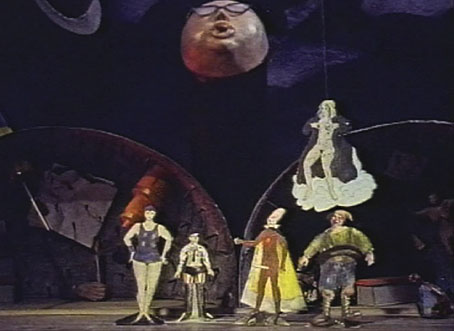
Yesterday I mentioned Leslie Megahey’s Ligeti film, All Clouds Are Clocks, an hour-long documentary based around an interview with György Ligeti filmed in 1976. A unique feature of that film was that Megahey returned to film Ligeti in the same room in 1991 where they discussed the composer’s work during the intervening period. Of these, Le Grand Macabre, written in the late 1970s, was the most ambitious piece.
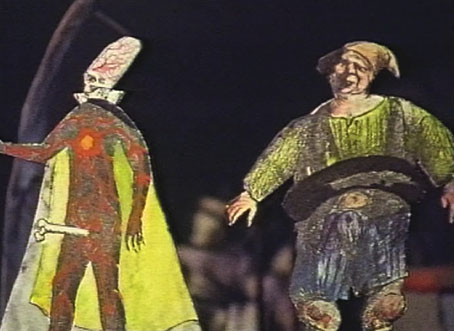
Bartók and Ligeti share some attributes: both were Hungarian, and both were forced to flee their native country. Both composers also wrote only one opera apiece. Le Grand Macabre is Ligeti’s opus, an absurdist drama based on Michel de Ghelderode‘s 1934 play, La Balade du grand macabre. In the film Ligeti explains that he didn’t want to repeat the mid-century concept of the anti-opera but was also dissatisfied with the traditional variety, hence Le Grand Macabre‘s description as an “anti-anti-opera”, a work that combines the tradition and its reaction.
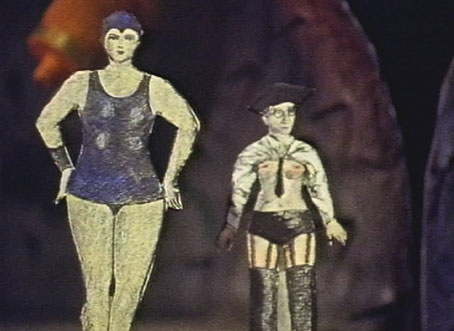
The libretto by Ligeti and Michael Meschke concerns the appearance of Death (here named Nekrotzar) in Breughelland where the character announces the imminent end of the world:
Le Grand Macabre is, to quote Mr. Ligeti, set in “the run-down but nevertheless carefree and thriving principality of Breughelland in an ‘anytime’ century.” It’s a place of earthy peasants, grotesque monsters and pompous officials right out of a Breughel painting.
The opera quickly becomes a showdown between the perpetually tipsy Piet the Pot, a professional wine taster, and his nemesis Nekrotzar, the Grand Macabre of the title and an amusingly malevolent figure. A sex-obsessed young couple, a beleaguered court astrologer and his bullying mistress, and a gluttonous young prince are among the land’s other motley citizens. (more)
These pictures are from Megahey’s film and show stage designs for a production in Bologna by the French artist/writer/filmmaker Roland Topor. (Megahey’s commentary says that some elements of Topor’s costumes were censored for the production although he leaves us to guess which ones.) This is the only place I’ve seen Topor’s designs, all of which appear more inventive than the designs for subsequent productions. YouTube has examples of recent stagings if you search around, the clips there also giving some idea of the music which includes an overture for car horns. Megahey’s film showed Ligeti to be more ebullient than his serious reputation might suggest, and his sense of humour comes to the fore in Le Grand Macabre.
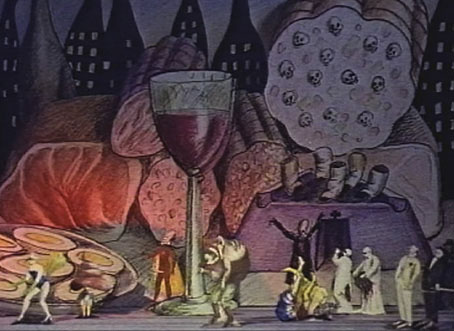
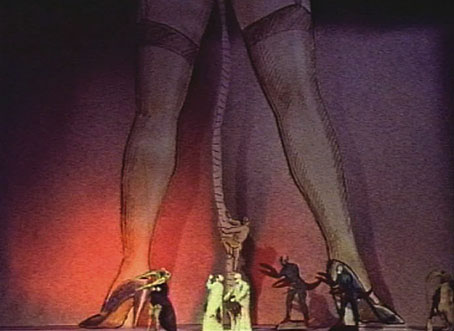
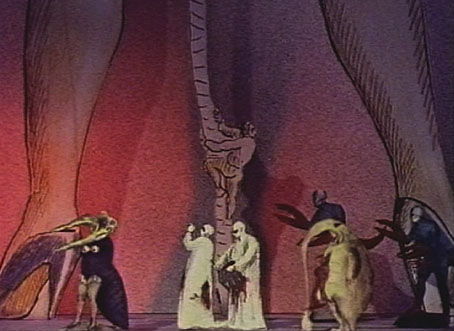
Previously on { feuilleton }
• Leslie Megahey’s Bluebeard
• A playlist for Halloween: Orchestral and electro-acoustic
• Les Temps Morts by René Laloux
• Metronomes

Oh my god, Topor doing Ligeti. This is so perfect.